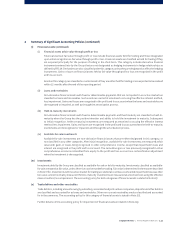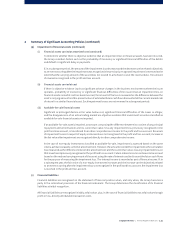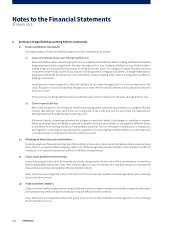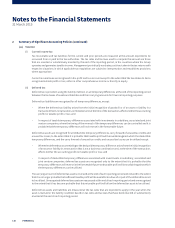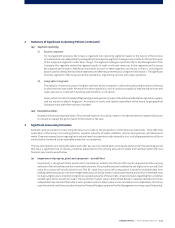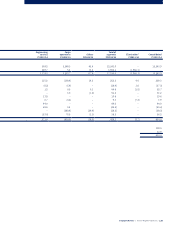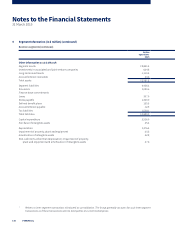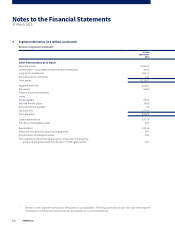Singapore Airlines 2015 Annual Report Download - page 125
Download and view the complete annual report
Please find page 125 of the 2015 Singapore Airlines annual report below. You can navigate through the pages in the report by either clicking on the pages listed below, or by using the keyword search tool below to find specific information within the annual report.
2 Summary of Significant Accounting Policies (continued)
(aj) Segment reporting
(i) Business segment
For management purposes, the Group is organised into operating segments based on the nature of the services
provided which are independently managed by the respective segment managers responsible for the performance
of the respective segments under their charge. The segment managers report directly to the Management of the
Company who regularly review the segment results in order to allocate resources to the segments and to assess
the segment performance. Additional disclosures on each of these segments are shown in Note 4, including the
factors used to identify the reportable segments and the measurement basis of segment information. The significant
business segments of the Group are airline operations, engineering services and cargo operations.
(ii) Geographical segment
The analysis of revenue by area of original sale from airline operations is derived by allocating revenue to the area
in which the sale was made. Revenue from other operations, which consist principally of engineering services and
cargo operations, is derived in East Asia and therefore, is not shown.
Assets, which consist principally of flight and ground equipment, support the entire worldwide transportation system,
and are mainly located in Singapore. An analysis of assets and capital expenditure of the Group by geographical
distribution has therefore not been included.
(ak) Exceptional items
Exceptional items are separate items of income and expense of such size, nature or incidence that their separate disclosure
is relevant to explain the performance of the Group for the year.
3 Significant Accounting Estimates
Estimates and assumptions concerning the future are made in the preparation of the financial statements. They aect the
application of the Group’s accounting policies, reported amounts of assets, liabilities, income and expenses, and disclosures
made. They are assessed on an ongoing basis and are based on experience and relevant factors, including expectations of future
events that are believed to be reasonable under the circumstances.
The key assumptions concerning the future and other key sources of estimation uncertainty at the end of the reporting period
that have a significant risk of causing a material adjustment to the carrying amounts of assets and liabilities within the next
financial year are discussed below.
(a) Impairment of property, plant and equipment – aircra fleet
Impairment is recognised when events and circumstances indicate that the aircra may be impaired and the carrying
amounts of the aircra exceed the recoverable amounts. Recoverable amount is defined as the higher of an aircra’s fair
value less costs to sell and its value-in-use. The fair value less costs to sell computation is based on available data from
binding sales transactions in an arm’s length transaction of similar assets or observable market prices less incremental costs
for disposing the asset. In determining the recoverable amounts of the aircra, certain estimates regarding the current fair
market value of the aircra are made. The current fair market value is determined based on desktop valuations from an
independent appraisal for fleet with similar operational lives. When value-in-use calculations are undertaken, the Group
uses discounted cash flow projections based on financial budgets approved by the Management covering a specified period.
Singapore Airlines | Annual Report FY2014/15 |123


